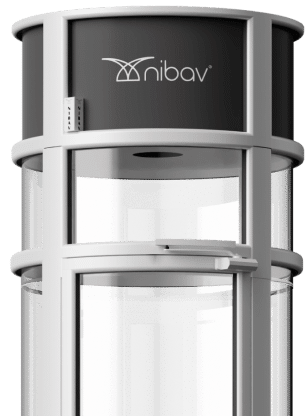
What Makes Air-Driven Elevators the Future of Sustainable Mobility in Canada?
In the teeming urban centers of Canada where the skyline is pierced with skyscrapers, and people live the vertical way more naturally than in others, sustainable mobility alternatives are a must more than ever. As cities long to decrease their carbon footprint and impede the environmental impact of high-speed urbanization, technologies surface to heal how people traditionally moved vertically. Air-driven elevators are the most innovative, typically speaking, and one more good example of sustainable development. It gives an ecologically friendly solution in opposition to other kinds of elevators. Today, we will enlighten you on why air-driven elevators are the next thing for ecological means of mobility in Canada, about their energy efficiency, further benefits for the environment, technological improvements, and reshaping urban landscapes into brighter ones.
Table of Contents
Energy Efficiency:
The simplicity of such air-driven elevators rests on the innovative idea of using differentials in air pressure to power vertical transport. If electrically driven elevators have been dependent on motors and counterbalances to operate, which use a large amount of energy and are prone to severe safety concerns in case of electrical blackouts, air-driven systems count on compressed air to push the elevator car upward. The latter method is groundbreaking as far as energy conservation is concerned, cutting practically in half the amount of consumed electricity when operating an elevator. Integrating an air-driven elevator into such a country will offer much in terms of functional and sustainable mobility solutions.
Integrated with Renewable Energy:
From hydroelectricity in British Columbia to wind farms in Alberta, Canada has not run dry of renewable sources of energy. Employing these sources in the working principle of an air-driven elevator will further add to its quotient of sustainability. Conclusively, with air-driven elevators that use renewable energy to produce compressed air, their damage to the environment is nil, considering both fossil fuels and global warming emissions are drastically reduced. This means automatic efficiency and is best suited for the policy that Canada goes by—the promise of having a clean energy future.
Environmental Benefits:
The larger majority of traditional elevator systems involve much of construction activities, right from the digging of spaces. For instance, since air-driven elevators require smaller shafts with less supporting structure, their construction-related emissions and surrounding impacts get reduced. Another environmental benefit of compressed air as an elevator power source is that it obviates the need for refrigerants and lubricants required by traditional systems, which contribute to environmental pollution. Air-driven elevators through reduction of resource use and environmental disruption offer an environmentally sustainable approach to urban vertical transportation in Canada.
Adaptability to Climate Change:
Climate change is showing its devastating effects in Canada, so resilient infrastructure solutions are increasingly now a compulsion. The ones driven by air offer increased resilience to extreme weather compared to the conventional ones. Simple mechanics, and reliance on compressed air as the mode of operation reduce the prevalence of power outages and mechanical breakdowns due to extreme weather, allowing henceforth vertical transportation even in desiring conditions. In this manner, the technology preserves mobility and access, at least in times of crises or natural disasters.
Cost-Effective:
Finally, though the upfront cost of these air-driven elevator technologies is higher than traditional means, they are very cost-effective after a person has invested in them. Energy consumption and maintenance are also reduced to nil, thus promoting greater operation cost savings across its lifecycle and an advantage to building owners and developers. Also, in the long run, the cost of air-driven elevators is likely to reduce with technological advancements and the attainment of scale economies, thus further strengthening its market competitive position. One more reason that would be sufficient to enable air-driven elevators to continue luring Canada as a truly vibrant sustainable mobility solution is cost-effectiveness.
Accessibility and Safety:
The focus of sustainable mobility resides in ensuring that all people, regardless of their disabilities or abilities, have equal access to transport services. The cab designs of the air-driven elevators are inclusive of added modern facilities like capacious, audio-visual indicators, and tactile buttons, among others, in a bid to make it safe and convenient for everyone using vertical transportation. In this sense, air-driven elevators are extremely accessible in all regards to the urban environment throughout Canada. This accessibility is associated with the policy of Canada, in general, to promote diversity and inclusion in any field of life.
Innovation and Technological Advancements:
Air-driven elevator technology has represented a very significant leap in the sector of vertical mobility. In addition, with all that is currently under advancement regarding research and development within the air-driven elevator sector, one may expect even higher efficiency, more reliability, and increased performance in the future. Such an evolution is already in progress, and it distinguishes the air-driven elevator as a dynamic solution for sustainable mobility in Canada, able to satisfy the most diverse types of needs presented by contemporary urban environments. From state-of-the-art control systems to progressive materials and manufacturing processes, the future of air-driven elevators is colorful.
Air-driven elevators have been revolutionary as an alternative solution for sustainable mobility concerning the vertical landscape in Canada. Looking at its energy use, environmental benefits, cost-effectiveness, climate resilience, accessibility features, and innovation, one would argue it has characteristics that would give it leverage over others to be considered most useful and usable in today’s modern cities. As Canada lays its eyes on establishing new innovative ways of building sustainable and resilient cities, the air-driven elevators are bound to open a vision for an equal and green way forward. By doing this, Canada will be a global example of green, sustainable urban development. The road to sustained mobility always starts with just one step—or, in this case, a smooth run inside an air-driven elevator.
For more information about air-driven elevators and sustainable mobility solutions, visit Nibav Lifts
Get in touch with our home elevator experts now and experience your home with a whole new level of luxury and comfort.
Talk to Our Experts